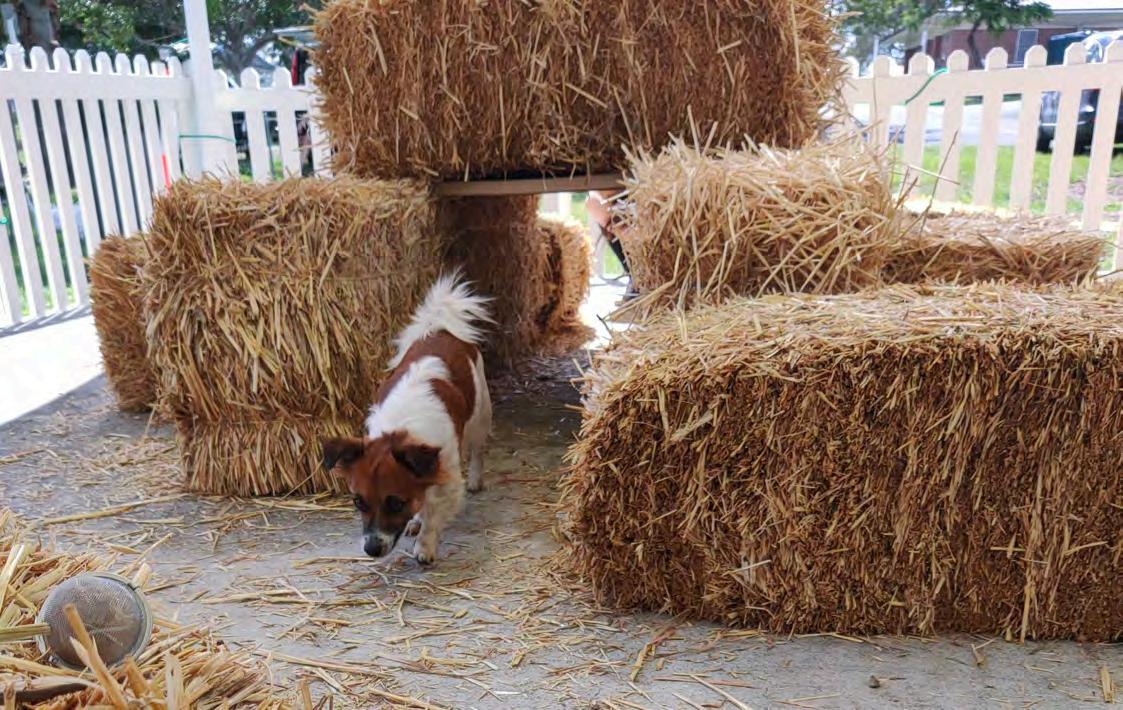
14 minute read
Dog Sports - Barn Hunt
Dog Sports
WHAT IS BARN HUNT?
The ANKC National Committee is investigating and researching opportunities to bring Barn Hunt, a new dog sport, to Australia. Regular training days are already being held at Dog Queensland, Durack.
If introduced, Barn Hunt will lie within the discipline of Earth Dog. Only specified small breeds, including Terriers and Dachshunds, can compete in Earth Dog whereas in Barn Hunt any dog can compete. The activity remains the same as in Earth Dog, where a dog’s natural instinct is tested to locate and quarry vermin or similar in a simulated environment.
Open to all breeds and abilities Barn Hunt welcomes canines of all sizes and impairments. It is particularly suited to earth dog breeds who do not meet the size criteria, other terriers and breeds who display the required instincts, including older dogs who are not agile enough for the more active form of the sport.
To register your interest or would like additional information, contact Kim Dawson at kimmaree1@hotmail.co.uk
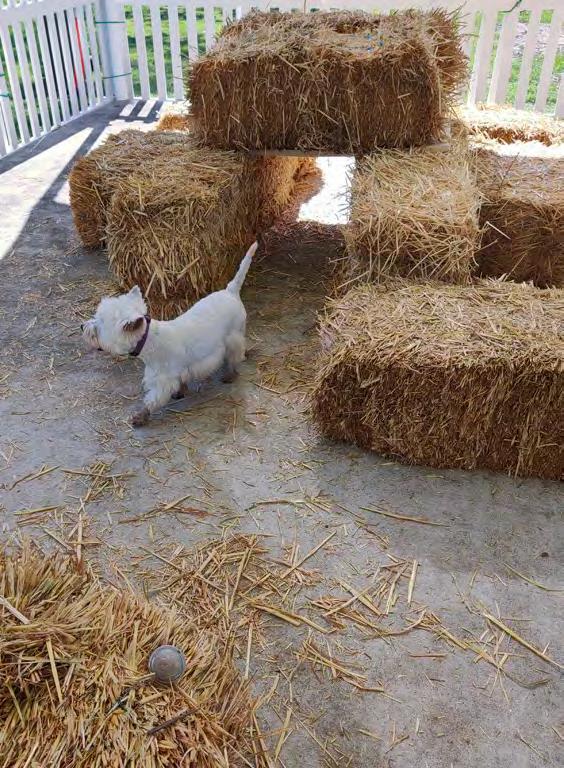
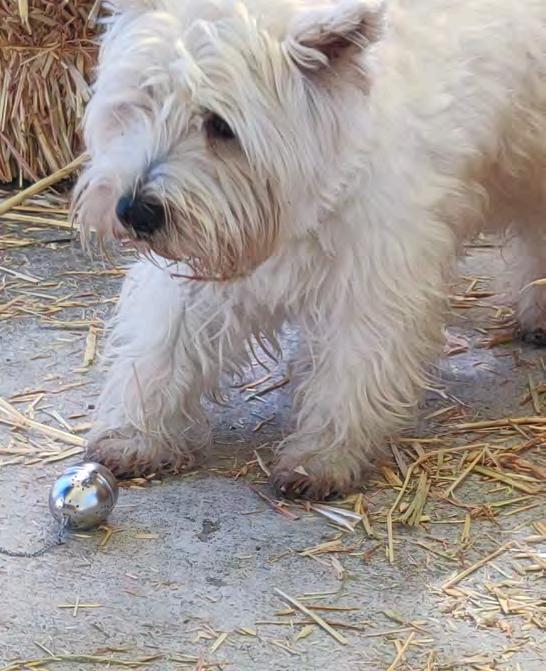


The Earth Dog Sub Committee have enjoyed a number of get-togethers at Durack in the hope of instigating renewed interest in the sport. There are moves underway to revive the Earth Dog area including a general clean-up and re-fence so that competitions can resume as soon as possible. A progress update will be shared with members in due course.
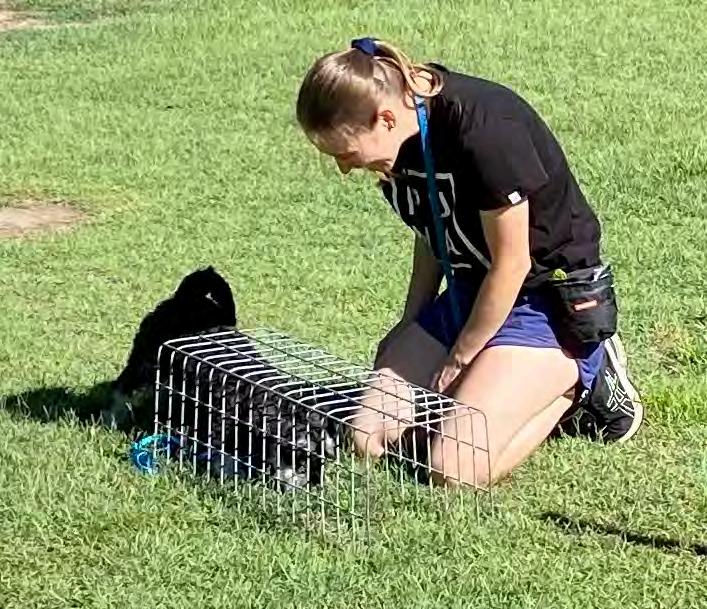

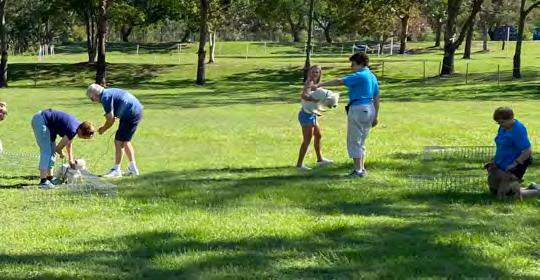
ABOVE (L-R): GORDON MAYNE, LEY JAMES, AMY EDEN, IAN ALLEN WITH THE LEY JAMES CANINE ARENA SIGN SOON TO BE MOUNTED AT THE CLUB.
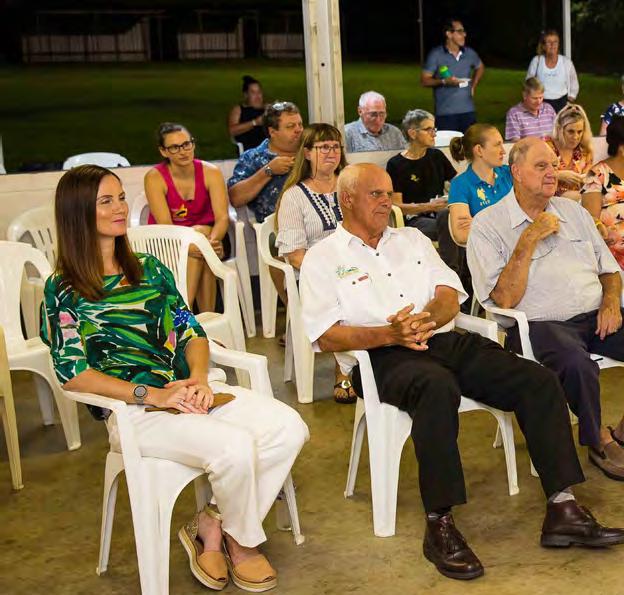
OVER 60 MEMBERS AND GUESTS ATTENDED THE CCKC ANNUAL GENERAL MEETING AND SPECIAL PRESENTATION.
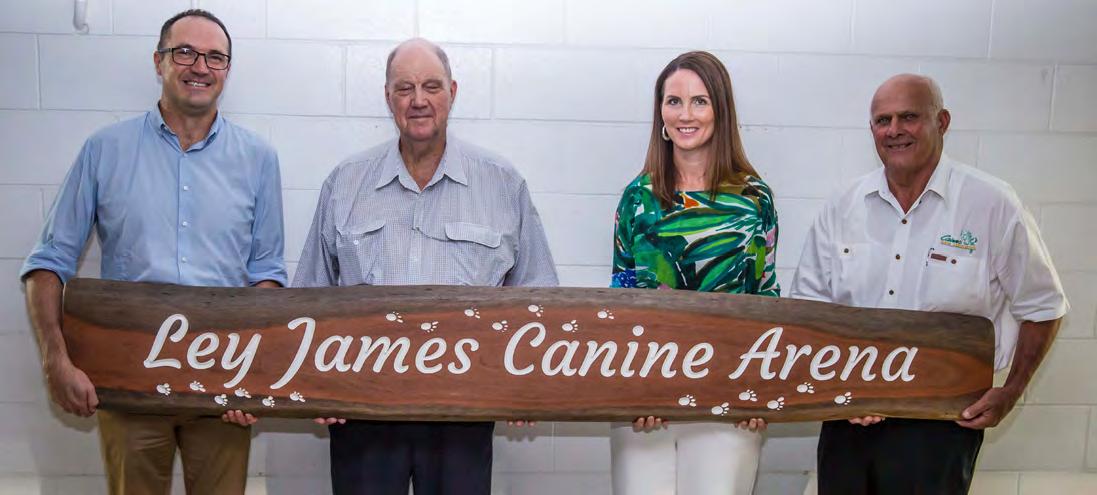
– Gordon Mayne At the Cairns City Kennel Club Inc’s Annual General Meeting on Saturday, 30 January 2021, Ley James hung up the President’s dog lead after 35 years as in role. The club members and invited guests celebrated Ley’s incredible contribution to the club and the canine community at a special ceremony after the meeting.
The club moved to its current location in the Cairns Show Grounds over 40 years ago. Ley was instrumental in leading the construction and development of the club’s facilities including the club house, grounds and shade shelters. Ley was known for utilising his community connections to get the job done with the minimal of fuss and was always ready to roll up his sleeves when the going got tough.
In a letter from Ulla Greenwood, President of Dogs Queensland said “Ley’s contribution to the “Dog World” in Far North Queensland and Queensland as a whole has been nothing short of extraordinary.”
Ley’s community involvement doesn’t stop at the Cairns City Kennel Club. He is an all-breeds dog show judge and has judged at dog shows across Australia, New Zealand, Canada and Taiwan. Ley has held positions on the Dog Queensland and the Conformation Judges Sub-Committee leading the training development of new dog show judges. Incoming President, Gordon Mayne, is looking forward to working with club members; “Ley has laid some incredible foundations for the club’s future. It’s a great club with an amazing team of dedicated members. We can only go from strength to strength.”
You will also see Ley at the Cairns Show Association where he has the role of VicePresident and Chair of the Livestock Committee. He has been a member of the association since 1980.
Ley is a Life Membership of the Cairns City Kennel Club, and Mareeba and District Kennel Club, Canine Control Council of Queensland (Dogs Queensland), Cairns Show Association and the Norwich Terrier Club of the United Kingdom.
In recognition of Ley’s outstanding contribution, Councillor Amy Eden formally named the club grounds the Ley James Canine Arena in the presence of over 60 members.
Ian Allen, President of the Cairns Show Association, acknowledged Ley’s long time dedication and support to the Cairns community and said “it was only fitting that the grounds he established be named in his honour.”
BELOW: THE CCKC KITCHEN CREW ALWAYS PUT ON A FANTASTIC SPREAD AT CLUB EVENTS.

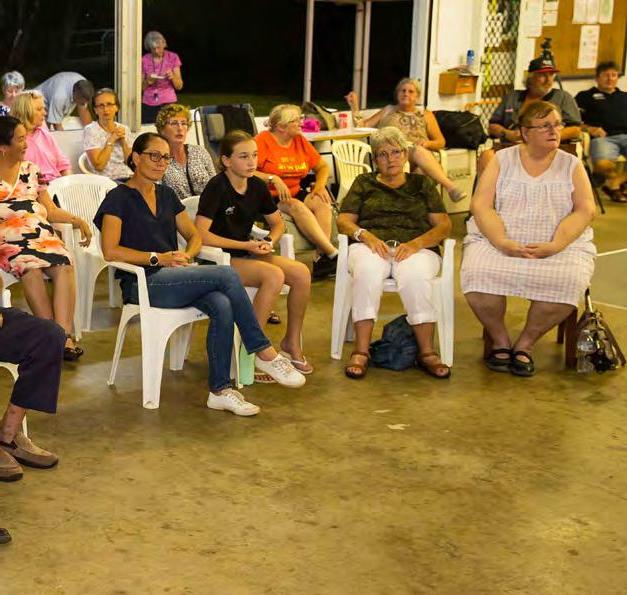

OZ TRAIL MEMBER DISCOUNT
Members looking top purchase dog–related products including gazebos, chairs and more can now take advantage of a 25% discount from Oz Trail. The Dogs Queensland collection can be viewed by visiting https://www.oztrail.com.au/ collections/dogs–queensland Members will need to enter the promo code DOGGIEDEAL21 with the discount being applied at checkout when using the link: https://www.oztrail.com.au/discount/ DOGGYDEAL21?redirect=%2Fcollections% 2Fdogs–queensland
MISSING DOG WORLD MAGAZINES (C.C.C.Q.) 1968 January, February, March, June, July and November 1966 January 1964 January and December 1963 February, June, July, August, September and October 1958 January, May, September and October 1957 January, July, October, November and December 1956 January and July 1955 May and December

CAN YOU HELP?
Dogs Victoria’s Laurie Luxmoore Library is seeking the help of fellow canine members in sourcing the following Dogs Queensland journals.
If you have any of the listed magazines and would like to donate them to the library, contact Heather Simpson at corwin@iinet.net.au
ACUTE PANCREATITUs

Joanne Bibby – Fursafe® Most dog owners have heard about Pancreatitis, however, for those who are new to owning a dog, or the term, Pancreatitis is defined as an inflamed pancreas.
definition The Pancreas: is a vital organ in the dog’s body which secretes digestive enzymes. These enzymes break down the food your dog eats so that the body can absorb crucial nutrients. The pancreas is located near the dog’s stomach. itis: is a term that denotes inflammation of an organ and in this case, the pancreas. Pancreatitis, if left untreated, or allowed to go unchecked for a long period, can cause damage to the pancreas and other organs such as the Liver and / or Kidneys. Speak to your Vet if you would like to know how the pancreas works and the consequences of it not being treated. In short, it is imperative that dog owners become familiar with the signs and symptoms of Pancreatitis because it is a condition, which if not treated by a Veterinarian urgently, has the potential to be life-threatening. identification Identifying pancreatitis can be a little tricky at first because the signs and symptoms may appear closer to a less than serious condition.
You need to air on the side of caution and assume it could be pancreatitis; especially if the external factors are present; • what has your dog recently eaten, is it high in fat? or
• is the bin knocked over and scraps are visible, what food was in there? Familiarise yourself with the signs and symptoms. Remember that symptoms can show up over a very short period of time. If you suspect Pancreatitis transport your dog to the Vet without delay.
causes of Pancreatitis Your dog’s pancreas may become inflamed for the following reasons, but not limited to: • Your dog may be obese • Eat or have eaten fatty foods • Sustained trauma to the abdomen • Has a diagnosed medical condition which may
• Your dog may have a predisposition to
Pancreatitis such as:
Miniature Schnauzers, Poodles, Cocker Spaniels Please note that any dog can experience Pancreatitis
signs & symptoms If you know what your dog looks like when they are well, you can tell when they don’t • Loss of appetite, their food is untouched • Not drinking much or any water; if you are unsure if they have been drinking do a dehydration test (see action below). A good idea is to fill the water bowl to the very brim every morning; this way you can see if / how the water level changes. • Weakness/lethargy with possible sounds of discomfort like whimpering • Your dog may appear depressed when usually they are upbeat • ever; they may be hot to touch or shivering; take their temperature, if it is not normal then get to the Vet • Your dog may be vomiting and / or have diarrhoea; make sure you inspect the fluids and take note what it looks like; take a sample to the Vet
• If your dog is bleeding (shows up in their diarrhoea), their gums will also be discoloured and pale • When they react to touch around the belly or are hunched over, you can assume they have a stomach complaint • You may notice your dog is having a hard time breathing • Their heartbeat may be irregular • Your dog may go into shock, so treat for shock regardless of signs, (see action below).
action If your dog is not showing typical signs and symptoms and appears relatively alert then undertake a secondary assessment 1. Undertake a dehydration test: Do the pinch test on their skin, does it spring back under 2 seconds? Or test their capillary refill – touch the gum above their teeth press and release, does it return to normal colour under 2 seconds?
2. Take your dog’s temperature to see if it is in normal range 3. Call your Vet if you are in anyway unsure If your dog shows typical signs and symptoms, before you start driving, as set out above: 1. Undertake Primary Assessment a. Check the airway for blockages or foreign objects; remove if there is. If your dog has been vomiting finger swipe or use a tongue depressor to scoop out the vomit. b. Check the breathing (respirations) e.g., count the rise and fall of the chest – start artificial respiration if not breathing. Is the breathing normal or shallow, fast or not breathing? Monitor all the way to the Vet! c. Check circulation (pulse) – does your dog have a pulse? – start CPR if no pulse. 2. Treat for Shock; Wrap dog in blanket securely and place in create or box; raise their bottom by placing a blanket underneath them 3. Speak soothingly and stroke to keep calm and quiet 4. Transport to Vet 5. If you are on your own driving your dog to the
Vet; you will likely be very distracted by your dog’s condition, however you must be vigilant on the road
If you have someone to drive you: • Sit in the back with your dog • Monitor during transport to vet to make sure your dog is breathing • If your dog stops breathing, begin artificial respiration • If your dog’s heart stops beating, begin CPR References: Fursafe Emergency Dog First Aid Guide, akc.org and vetwest.com.au
A healthy weight starts with healthy habits
A healthy weight is key to your dog’s general health and wellbeing. Over this and the next three editions of the magazine Dogs Queensland will publish four simple ways to maintain that healthy weight and keep your dog in good shape, courtesy of Royal Canin.
We begin with Healthy Portioning followed by Shape (April), Activity (May) and Growth (June).
Weight Management – Healthy Portioning
HEALTHY PORTIONS ARE SMALLER THAN YOU THINK
Many pet owners think their dog needs more food than it really does. This means that many dogs are overfed which can cause weight gain and lead to other health issues.
WHAT IS THE CORRECT PORTION SIZE FOR MY DOG?
A healthy weight is maintained by achieving the right balance between energy intake and energy output. So the correct portion size for your dog can be different from any other dog, even if it is the same breed.
The starting point is to follow the feeding guide given by the most food you have selected which is most relevant to your dog. However, a number of factors may also need to be taken into consideration when determining the portion size, recommended feeding quantities for cats are often just guidelines.
Firstly, consider the size of your dog. A small breed such as a Chihuahua will require a very different amount of calories from a Great Dane. Try to choose a product which is designed for your breed or size of dog.
Next, think about their activity levels; are they a working dog or do they spend most time indoors with short walks during the day?
If you have any concerns about what quantities to feed your dog, please contact your local vet for specific advice.
THE IMPORTANCE OF HEALTHY PORTIONING
Your dog’s portion size plays a big part in maintaining a healthy lifestyle. No matter how much they exercise, if a dog’s portion is too large, they will still be prone to putting on weight. Keep in mind, recommended feeding quantities for dogs are often just guidelines.
The amount of food your dog requires may change throughout their life. For example, if your dog gains weight, you may wish to alter their daily calorie intake to counter this. As your dog grows older and becomes less active, then their food

It’s important to consult your vet if you are ever unsure about your dog’s portion size.
WHY IS MY DOG BEGGING? If your dog seems to be asking you for food all the time, it doesn’t necessarily mean that they are hungry. This apparent taste for tidbits may actually be a habit, a sign of boredom or attention seeking. Giving in to begging can reinforce this behaviour.
That being said, if your dog continues to show food seeking behaviour, this could also be a sign of illness. They may not be absorbing the necessary nutrients from their food. Parasites such as worms can cause symptoms of increased appetite, constant hunger, sometimes combined with weight loss.
If signs of begging or consistent hunger persist, it’s important to consult your vet to rule out any underlying issues.

TIPS TO MAINTAIN PORTION SIZES FOR YOUR DOG Maintaining healthy portion sizes for your dog may feel tricky, however there are a number of things you can consider to make sure you’re not overfeeding your dog.
Once you’ve identified your dog’s correct portion size, use weighing scales for each meal to maintain accurate quantities every time. It’s easy to underestimate how much you’re actually feeding your dog.
Don’t add human food to your dog’s ration as this may upset the nutritional balance and calorie intake they require. If you’re giving your dog treats, take note of the calories and subtract these from their daily portion to make sure they aren’t overeating. Treats should take up no more than 10% of a dog’s daily rations.
Alternatively, taking kibbles from your dog’s rations to use as treats means you can be confident that your dog is getting the right balance of nutrients as well as maintaining the correct amount of calories.
To make a purchase call 3252 2661 or email barbara@dogsqueensland.org.au
OZ TRAIL MEMBER DISCOUNT
Members looking top purchase dog–related products including gazebos, chairs and more can now take advantage of a 25% discount from Oz Trail. The Dogs Queensland collection can be viewed by visiting https://www.oztrail.com.au/ collections/dogs–queensland Members will need to enter the promo code DOGGIEDEAL21 with the discount being applied at checkout when using the link: https://www.oztrail.com.au/discount/ DOGGYDEAL21?redirect=%2Fcollections% 2Fdogs–queensland


LIFE MEMBERSHIP CITATION – ANN SHANNON
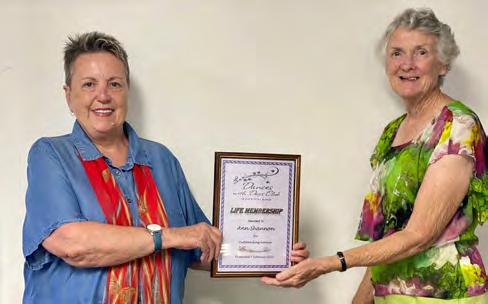
This award of Life Membership of the Dances with Dogs Club Queensland is made to recognise the exceptional contribution of Ann Shannon to the operation of the Club over the 10 plus years of its existence.
Ann was a foundation member of the Club when it was established in 2009, and has actively contributed to the Club since that time. She has continuously served as a member of the Management Committee, and has undertaken the huge task of Competition Secretary/Manager, managing the organisation of all our DWD competitions. She has also been a DWD judge for those 10 years and has occasionally managed time to compete herself.
For the three years 2016 to 2018, Ann was President of the Club. In addition to specific roles Ann has held, she has undertaken a myriad of other tasks to support the effective functioning of the Club and its events. Ann has also kindly made the private donation of title trophies annually.
Although not strictly relevant to the criteria, since they were undertaken in a private/business capacity rather than on behalf of DWDCQ, it should be acknowledged that these activities all followed Ann’s initiativeof bringing first Mary Ray, then Richard Curtis and other international Heelwork to Music/ Canine Freestyle presenters, to Camp Tailwaggers, thereby introducing us all to DWD and enabling us to develop our training, choreography and performance skills in DWD. She also facilitated a group of DWD enthusiasts’ travel to Crufts, particularly to see Heelwork to Music in that fabulous arena.
In a private capacity, Ann also produces a monthly DWD newsletter, which keeps readers informed of DWD activities not only in Queensland but across Australia.









